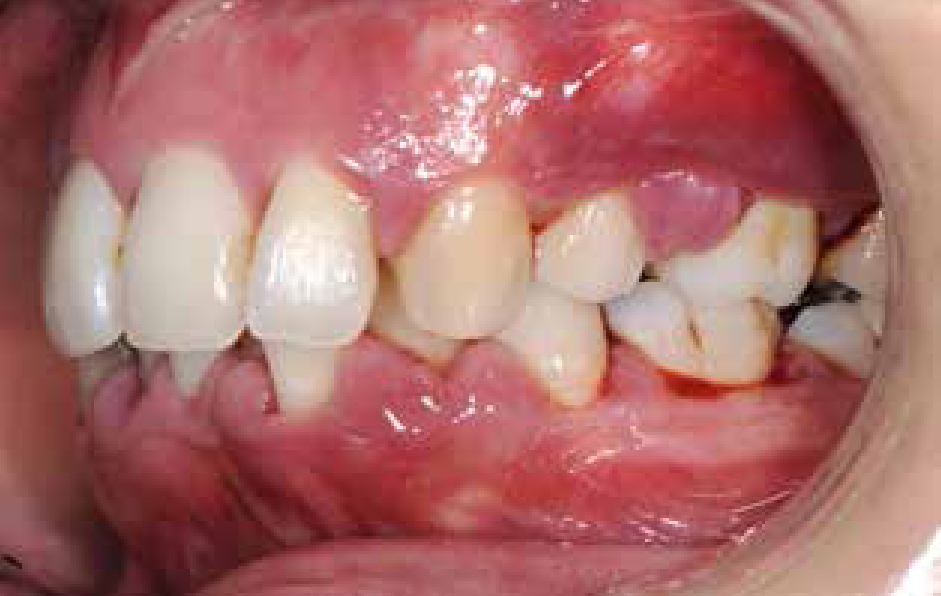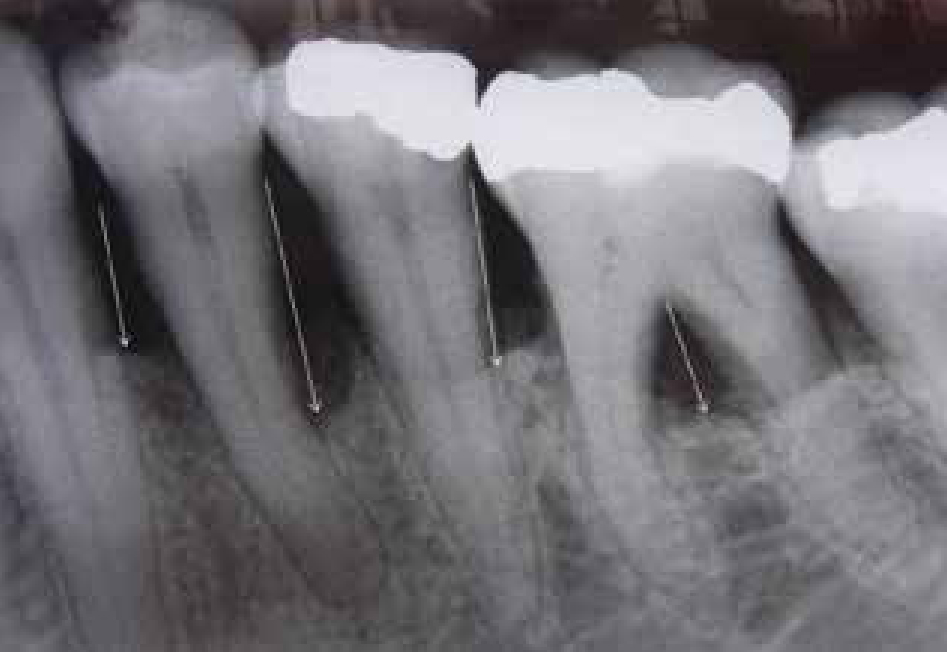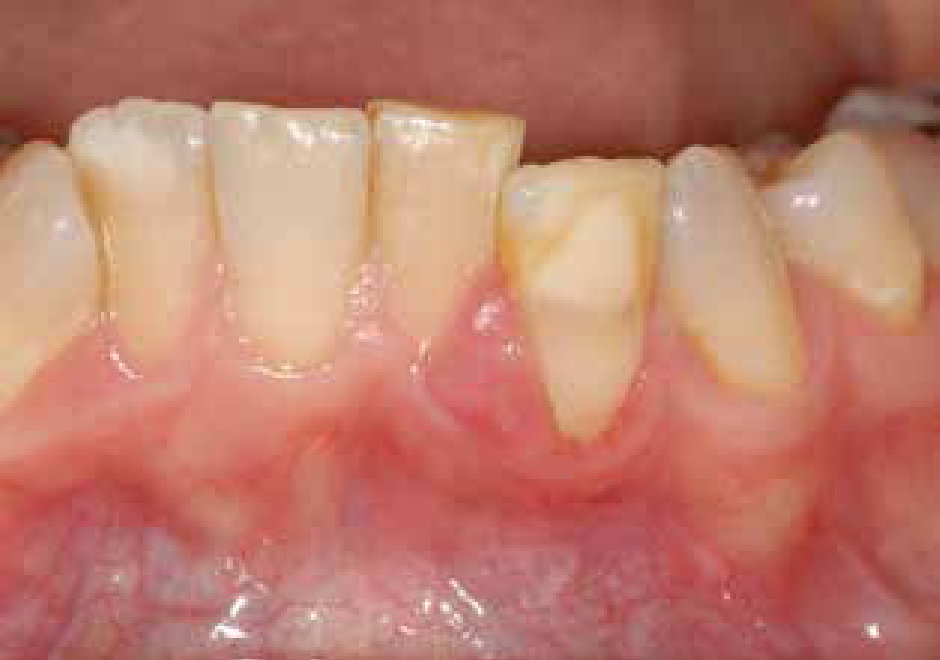This article discusses factors that affect periodontal (gum) health and implications associated with delay in conception and reported adverse pregnancy outcomes. Periodontal disease is the result of a host/parasite response in a susceptible group of people whose immune response is hyper-responsive to microbial colonisation of the subgingival (gum) tooth interface. The oral cavity is naturally colonised by more than 500 species of bacteria, some of which are pathognomonic for periodontal disease in patients with susceptibility. These bacteria trigger the immune response resulting in release of pro-inflammatory cytokines (promoters of inflammatory response) not just at the point of microbial infection but also throughout the body. This general up-regulation of the immune response is implicated as the mechanism involved in other systemic conditions, such as atherosclerotic cardiovascular disease, rheumatoid arthritis, aspiration pneumonia and chronic obstructive pulmonary disease (Hajishengallis, 2015). Pregnant women do not seem to harbour different groups of microbes, but preterm mothers have been shown to have higher levels of subgingival bacteria compared to mothers who go to term (Borgo et al, 2014). The acute phase inflammatory marker, C-reactive protein, has been found to be up to 65% higher during pregnancy where periodontal disease is present, indicating a general increase in the systemic inflammatory pathways (Pitiphat et al, 2006). Bacteraemia following chewing/tooth brushing may result in periodontal pathogens and their by-products reaching the placenta and spreading to fetal circulation and amniotic fluid. This may trigger immune/inflammatory responses in the placental/fetal compartment that have been linked to miscarriage, premature birth, pre-eclampsia and low birth weight. Fetal inflammatory tissue damage may also increase the risk for perinatal morbidity/mortality (Bobetsis et al, 2006; Clothier et al, 2007; Genco and Williams, 2010; Madianos et al, 2013).
The rise in hormonal levels of oestradiol, oestriol and in particular progesterone during pregnancy can alter the host immune-inflammatory response to oral bacteria, increasing inflammation of the gingival tissues (pregnancy gingivitis) and resulting in red, tender, swollen gums that may bleed spontaneously, when tooth brushing and/or when eating (Soory, 2000; Wu et al, 2015) (Figure 1). This is most likely to arise in the second month and can become most severe in the third trimester (Coventry et al, 2000). Some Bacteroides species implicated in periodontal disease will metabolise oestrogen and progesterone and if colonised in the oral cavity may become more prevalent during pregnancy with increased risk of disease. Natural body defence mechanisms involve production of free radicals and reactive oxygen species, which, if produced in excess, result in oxidative stress, which is a key driver for chronic inflammation and damaging to tissues (Hensley et al, 2000). This plays a pivotal role in chronic inflammatory diseases including periodontal disease. Oxidative stress susceptibility increases during pregnancy due to high metabolic demand and increased requirements for tissue oxygen, and is strongly implicated in the inflammatory process resulting in pre-eclampsia (Hansson et al, 2014). Cellular antioxidant defence mechanisms naturally try to counter damaging levels of oxidants and free radicals in tissues and this may be further influenced by diet. A diet rich in refined sugar, carbohydrate and saturated fat will increase oxidative stress, especially if consumed frequently, while the nutritional antioxidants vitamin C and E, found in leafy green vegetables and red/blue/black berries have been shown to counter oxidative stress. Research increasingly links diet and nutrition with the countering of oxidative stress and the role it plays in chronic inflammatory diseases. Nutritional advice should emphasise the benefits of natural food sources supplying the dietary benefits over single component supplements (Milward and Chapple, 2013).

Smoking also increases oxidative stress and is a significant risk factor for periodontal disease, with numerous adverse side effects including a reduction in blood supply to periodontal tissue, due to nicotine content; increased tissue breakdown; and reduced tissue healing response (van der Vaart et al, 2004). Smoking and nicotine products may therefore disguise the alert signs of inflammation and gum bleeding, which might otherwise prompt the seeking of dental advice. Smoking cessation should be discussed for general health benefits and is an essential behaviour change to optimise outcome for periodontal treatment. Smoking cessation referral may be required and advice about nicotine replacement therapy may be indicated as an interim measure. Use of E-cigarettes or vaping should not be encouraged during pregnancy, due to the significant harmful effects reported (US Dept of Health and Human Services, 2016). Placental transfer of nicotine can result in multiple adverse consequences for fetal and postnatal development, including sudden infant death syndrome, altered corpus callosum, deficits in auditory processing, and obesity (US Department of Health and Human Services, 2016).
Glycaemic control is also adversely affected by uncontrolled periodontal disease, with a bi-directional role reported and treatment of each condition achieving reciprocal control (Preshaw et al, 2012). Patients at risk of gestational diabetes should therefore achieve and maintain optimal periodontal health.
Dental treatment
Dental screening for periodontal disease should be encouraged, ideally before conception, since gum disease may play a role in delayed conception. A study found that on average it took two months longer for women with periodontal disease to conceive compared to women with healthy gums, and a dental check-up should be part of the advice given to women planning pregnancy, alongside that of smoking cessation, weight loss and folate supplementation (Hart et al, 2011; Fogacci et al, 2016).
Ensuring that preventative measures are in place can reduce the possibility of pregnancy gingivitis. This should include maintaining the highest level of oral hygiene, with attention to brushing techniques that clean at and below the gum line. Special care should be taken to thoroughly remove bacterial plaque between teeth, using floss and interdental brushes. This should be formally reviewed by the dentist or hygienist to ensure optimal cleaning techniques are used with the correct cleaning aids. Other oral disease such as tooth decay, calculus/tartar build up or overhanging restorations that interfere with good access for effective cleaning should be identified at check-up and treated. Pregnant women should be reassured that most dental treatment can be safely carried out during pregnancy. While it is recognised that x-rays are preferentially taken before pregnancy or deferred until after delivery, mostly for emotive reasons, in reality the associated risk to the fetus can be considered negligible and X-rays may need to be taken if justified (National Radiological Protection Board, 2001). An example of this may be for the assessment of an acute gum swelling/abscess where differentiation between a tooth or gum infection is required, and where specific treatments will be indicated. Good hygiene can be achieved with both manual and electric brushes, provided the brushing technique removes the bacterial plaque film from the gum line. The appropriate use of floss or interdental brushes will be determined by the presence and degree of disease. When established disease is identified during pregnancy, treatment should be undertaken as soon as possible to minimise the potential destruction of supporting structures of the teeth, which may be accelerated during pregnancy, and to establish periodontal health (Figure 2). Treatment of active disease may require several visits to stabilise the condition, with ongoing supportive therapy throughout the pregnancy to ensure optimal oral hygiene is maintained. When supra and subgingival scaling and debridement of tooth and root surfaces are required to remove deposits, local anaesthetic may be needed to allow thorough cleaning. This can be safely used with selection of appropriate anaesthetic such as lidocaine, and use of careful aspiration technique when giving the anaesthetic to avoid the risk of intravascular injection (Cengiz, 2007).

Another clinical feature that may be seen in some patients is development of a localised inflammatory gum swelling/epulis (Soory, 2000) usually on the gum margin, which can reach considerable size and cause bleeding and trauma when eating or brushing (Figure 3). These swellings are a localised hyper-responsive reaction to adjacent irritation, usually from retained plaque or calculus. Hygiene and debridement therapy are essential first steps in resolving periodontal disease and to shrink a pregnancy epulis, but some disease will require further treatment, which may involve surgery to gain access to the root surface anatomy and to re-contour gum tissue. This would generally be deferred until after parturition, but if a pregnancy epulis does not significantly resolve and continues to bleed or become traumatised, then surgical removal may be indicated during the pregnancy.

Conclusion
Women should be encouraged and advised to visit their dentist for a full oral health assessment, ideally before planning pregnancy or as early as possible during pregnancy. Common conditions include pregnancy gingivitis where the gum can be inflamed and prone to bleeding, and exacerbation of pre-existing periodontal disease. Less commonly a pregnancy epulis may develop, which can become large causing problems with traumatic bleeding and interfering with eating. Maintaining good oral hygiene can primarily control inflammation, with professional treatment required for established periodontal disease. More recent research suggests poor oral periodontal health could have a negative effect on the outcome of pregnancy.

